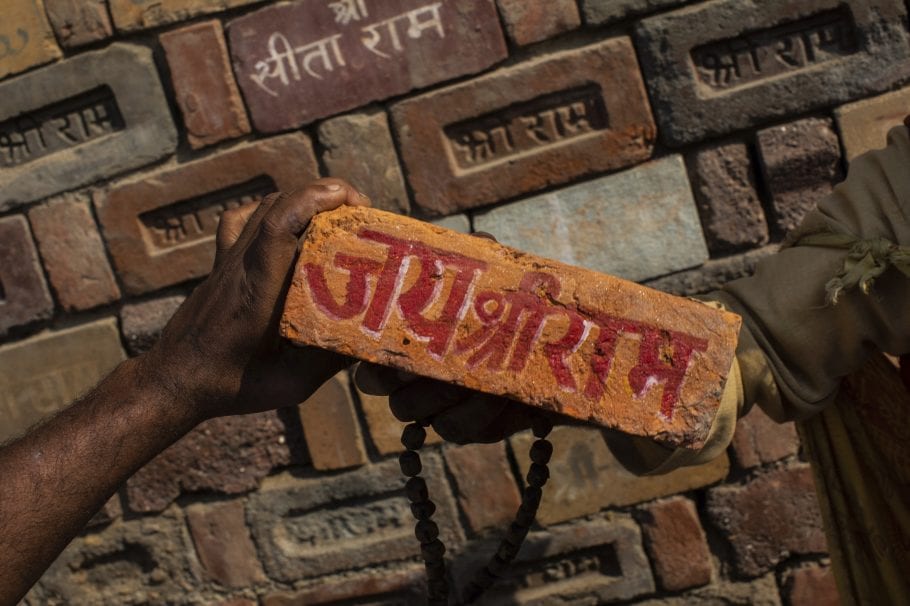
After Indira Gandhi in 1973, India's tryst with second time capsule
Backed by the BJP government, the Ram Janmabhoomi Teerth Kshetra Trust now plans to etch a narrative in Sanskrit and Hindi, and bury it 2,000 feet deep under the upcoming Ram temple at Ayodhya. As with several other of the government's moves, this is not an original idea.

A few thousand years ago, when artists painted their works on the cave walls of Ajanta and Ellora, or etched stories on construction sites and on materials in the Indus Valley, would they have wanted people in the distant future to “read” those? No one can really say, but they probably did.
Backed by the BJP government, the Ram Janmabhoomi Teerth Kshetra Trust now plans to etch a narrative in Sanskrit and Hindi, and bury it 2,000 feet deep under the upcoming Ram temple at Ayodhya. The idea, according to a spokesperson, is to negate any possible controversy that may arise in the future. A copper plate, with the version of the temple trust, is being readied for use during the foundation stone ceremony on August 5.
As with several other of the government’s moves, this is not an original idea. In 1973, the then prime minister Indira Gandhi buried a time capsule deep under New Delhi’s Red Fort that purportedly gave a glowing account of the earlier Jawaharlal Nehru government and that of her own.
Four years earlier, in 1969, Ms Gandhi had asked the Indian Council of Historical Research (ICHR) to work on the capsule. A history professor from the Madras Christian College, S. Krishnaswamy, was asked to author the narrative of the first 25 years of India’s independence. Ms Gandhi, on a high after the 1971 war against Pakistan and the creation of Bangladesh, buried the narrative (written on copper plate) on India’s Independence Day in 1973.
The narrative proved controversial as it reportedly did not meet the approval of another historian and the then archives commissioner T. Badrinath. But Ms Gandhi did not let this come in the way of burying the time capsule that was meant to be read after 1,000 years.
But a mere four years later, after the Emergency and the coming to power of the Janata Party, the then prime minister Morarji Desai ordered that the time capsule be exhumed. Strangely, few know what happened to the time capsule after that point. It was neither re-buried nor was the exact contents made public. In fact, it is not even known where the capsule was kept. Or whether it was destroyed or shoved away from public scrutiny.
Though Ms Gandhi returned to power in 1980, followed by her son Rajiv Gandhi in 1984, the issue was not raised again almost as if they were not interested.
Related news: Time capsule with ‘facts’ to be buried 2,000 ft beneath Ram temple
According to a News18 report, the Indira Gandhi government spent just ₹8,000 to bury the capsule. The Janata Party dispensation spent ₹58,000 to exhume it.
In 2012, the editor of the magazine Manushi, Ms Madhu Kishwar, sought information on it from the Prime Minister’s Office, but in vain, says the report.
Nearly 50 years after this, the BJP is now readying to freeze its version of the Ramayana epic, the Ayodhya dispute and related stories – in Sanskrit and Hindi. The capsule will, in all likelihood, assert that Ayodhya is the birthplace of Rama — to negate any possible sceptic in the future.
There is a fundamental assumption here, that a few hundred years from now, people will still be able to understand Sanskrit and Hindi the way they do now. It may be difficult, going by the experience of Indus Valley. Despite years of dedicated work, archaeologists investigating the remnants of the civilisation are even now breaking their head trying to decipher its writing system.
It would have been ideal for the nation to know what the contents of the narrative are, as it is not just the government or a political party which are in existence now. Over a hundred crore people in India too are living in the present time and would like to know what is being written for a future read.
Related news: How Ayodhya is getting decked up for groundbreaking event of temple
The statement of intent is intriguing. According to reports quoting a temple trust member Kameshwar Chaupal, the capsule will be placed 2,000 feet under ground so that anyone wanting “facts” will have access to it. How exactly will anyone have access to the capsule so deep under the ground is anyone’s guess, unless there is a way to get to it without disturbing the structure that is being built now.
The concept of a time capsule is not new. The first one was reportedly in 1876 by a New York magazine publisher Anna Deihem, who stuffed it with a gold pen and inkstand besides narrations of a few local events. It was opened a 100 years later, after having been largely ignored and left to languish under the US Capitol building, according to reports.
Among the most elaborate capsules was one by the president of Atlanta’s Oglethorpe University, Thornwell Jacobs, in 1937. He stuffed an underground chamber with 6,40,000 pages in microfilmed books, religious texts and a beer can among others. He decreed that it be shut for 6,177 years, according to the website internationalinside.com. It will be opened in 8112 AD.

